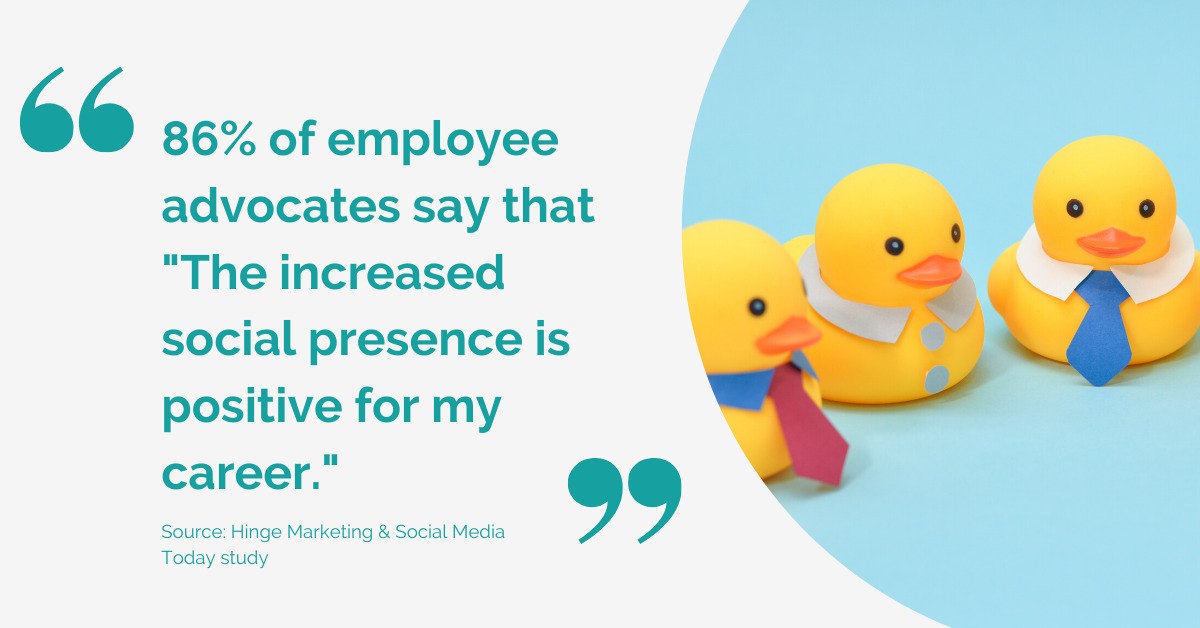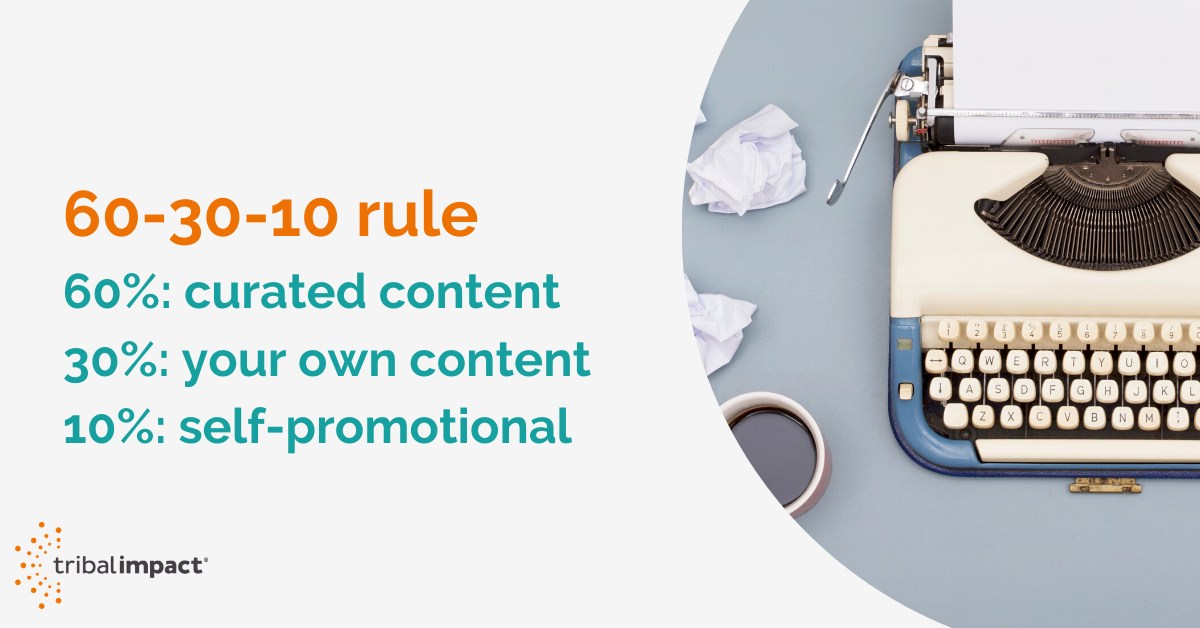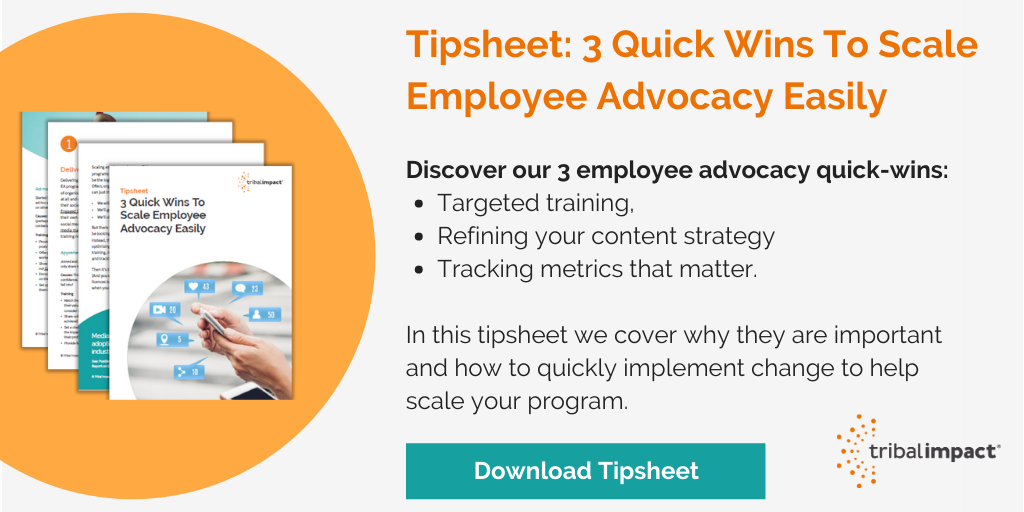Average adoption rates for employee advocacy are just 36.6% for mid-market companies but 61.02% for enterprise companies. Either way, that’s a lot of licences going to waste.

Post Beyond’s Customer Benchmark Report on Employee Advocacy shows just how much difference there can be between the adoption rate of different sized companies. And the gap between industries is even more significant - the engineering sector average is 75% versus less than 25% in the IT Services sector.
Yet benchmarks are just that: a means to check how your efforts fare against others. They won't help you when the C-Suite asks the pertinent question: Why are we wasting thousands on employee advocacy tools?
But the good news is that just 3% of employees sharing can deliver 30% of your total engagement. For example, we've worked with companies that have achieved over a 60% adoption rate within the company through a structured roll-out including training and enablement.
So if you have employee advocacy tool licences going to waste, your program isn't set to fail. In our experience, wasted licenses mean one of four things - all of which can turn a floundering program into a thriving one.
You’ve Not Delivered Targeted Training
Employees need to receive customised training in how to use employee advocacy, that relates to their experience and motivations, if the program is to work.
Yet a Hinge Marketing and Social Media Today study found that 72% of employees hadn’t received such training, whilst 57% felt that additional training would have a significant impact on its success.
There are nine stages of employee social maturity (which you can find out more about on the link), which you can usually group into one of four training needs:
- Inactives: These employees may not have even registered to your advocacy tool, or they may have joined your program and shared just once or twice. They could simply lack interest - seeing LinkedIn as an online, digital CV and nothing more - or it may be that they lack confidence.
- Connectors, Participators & Broadcasters: You’ll typically find that many employees fall into these categories. While they show some interest and promise on LinkedIn, they require further training to know how to use it more effectively.
They may also have failed to make it part of their routine, meaning they only see limited success from their efforts. (If this is the case, our 10 minute Coffee Cup Routine offers a quick cure.)
- Networkers: Networkers are keen to build their network, sending and accepting lots of connection requests. They also often spam their network's newsfeed daily with sales-focused content or only hitting reshare on every article that is faintly of interest - to them. They've likely forgotten/misunderstood training, or they're involved in a box-ticking exercise (i.e. they're not interested).
- Collaborators & Enthusiasts: These employees have an inherent or learned professional social media ability - they know how to engage and they formulate their own opinions. With targeted training, they could potentially become Thought Leaders or Industry Influencers.
This video explains our Social Business Maturity Model and how we map employees to the model using our quiz in order to identify their level of social activity:
They’re Simply Not Interested
Some employees don't see the value in being a part of an employee advocacy program. It may be that you’ve failed to communicate the benefits effectively. Just like with training, you need to adapt your message depending on different motivations.
Some may be motivated by career success, others by retaining their best team members and others will be focused on sales or revenue growth.
If so, it’s useful to have some stats to back up claims, such as:
- 56% of salespeople who share regularly exceed their sales quote (insidesales.com)
- 86% of employee advocates say that "The increased social presence is positive for my career." (Hinge Marketing & Social Media Today study)
- Organisations with employee advocacy programs see a 20% better employee retention rate (Altimeter Group & LinkedIn) and are 58% more likely to attract talent (LinkedIn)
Yet some people won't be interested, no matter how hard you try to engage them. You would be better off cancelling or reallocating their licences and saving resources for those who do show interest.

Your Content Doesn't Excite Them
Your employee advocacy program is only as good as your content. It requires volume and variety to engage your employees (but not too much that it overwhelms them).
We generally recommend that you stick with 8-12 topics. It provides enough variety for people to pick and choose what interests them, without leaving curators spread too thin to put decent content into each topic. Look at your data: what topics interest your employees most and can you merge some together?
Volume is also a must if you wish to see any traction. How much content you can feed into the tool will depend on your budget, but you should ideally aim to post between three and five pieces of new, quality content into your advocacy tool per workday to increase the number of high-active employee users (source: Dynamic Signal).
The type of content also matters. Some companies fill their tools with too much branded or self-promotional content. Instead, a good rule of thumb for social media content is the 60-30-10 rule:
Ignoring What The Data Is Telling You
If you’re reading this, it’s probably because you’re 6 to 9 months into your employee advocacy program and you’ve hit a wall. The good news is that you have 6 to 9 months of data at your disposal.
Employee advocacy tools generally provide metrics such as adoption figures and who is "active", but that definition can vary. To scale your program, you'll need to delve much deeper than “vanity metrics”, looking at data such as:
- Who are your best social sharers? Who is the least active/erratic/infrequent?
Do certain departments, managers or topics that employees sign up to correlate with higher success rates?
- Who are your social spammers?
Quickly establish why and then you can either provide further training or remove them.
- What’s the average number of articles shared per week? How does this compare with best practice benchmarks?
Top employee advocates will typically share 3 to 4 times a week (and the majority should be sharing at least 1 to 2). If they’re not, it’s a red flag.
- Who are your top curators? What do they do differently?
- What topics are most popular with employees? What topics see the most engagement with their audience?
They will likely differ, and you need to cater to both.
- What content formats perform best?
Do infographics, guides, long LinkedIn opinion posts, etc., perform better in terms of internal and external engagement? Look to optimise the balance to keep your employees willing to share and your audience wishing to engage.
It may feel daunting to look at all the above steps and wonder how you'll go from poor-to-average to best-in-class. But you are already sitting on the data an
In our webinar, How to optimise your employee advocacy program for the year ahead, we provide more advice on how to squeeze more out of your employee advocacy budget, along with insights from SAP, who continuously optimise to significantly exceed employee advocacy benchmarks.


